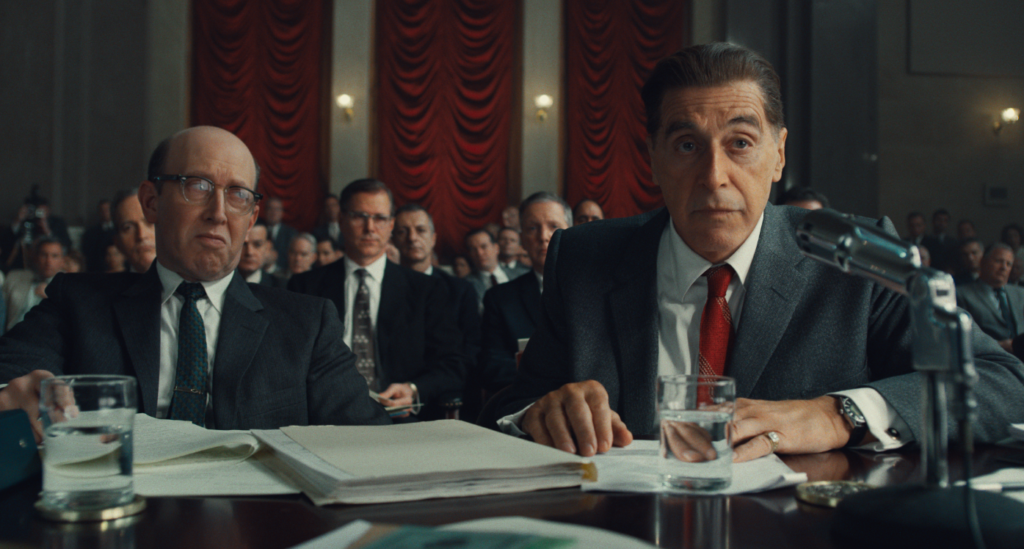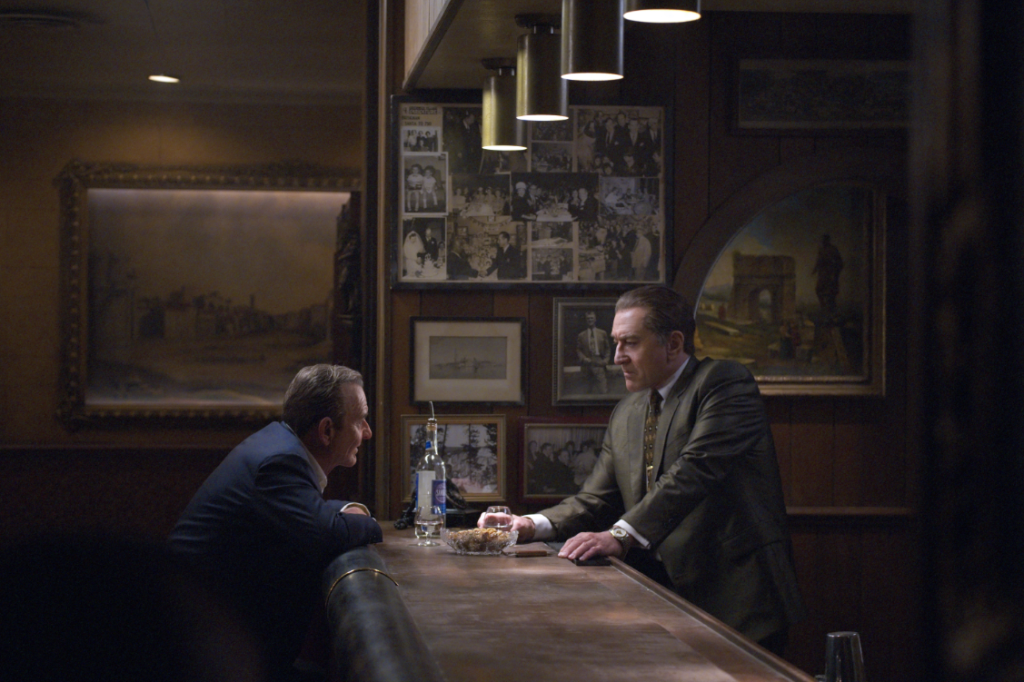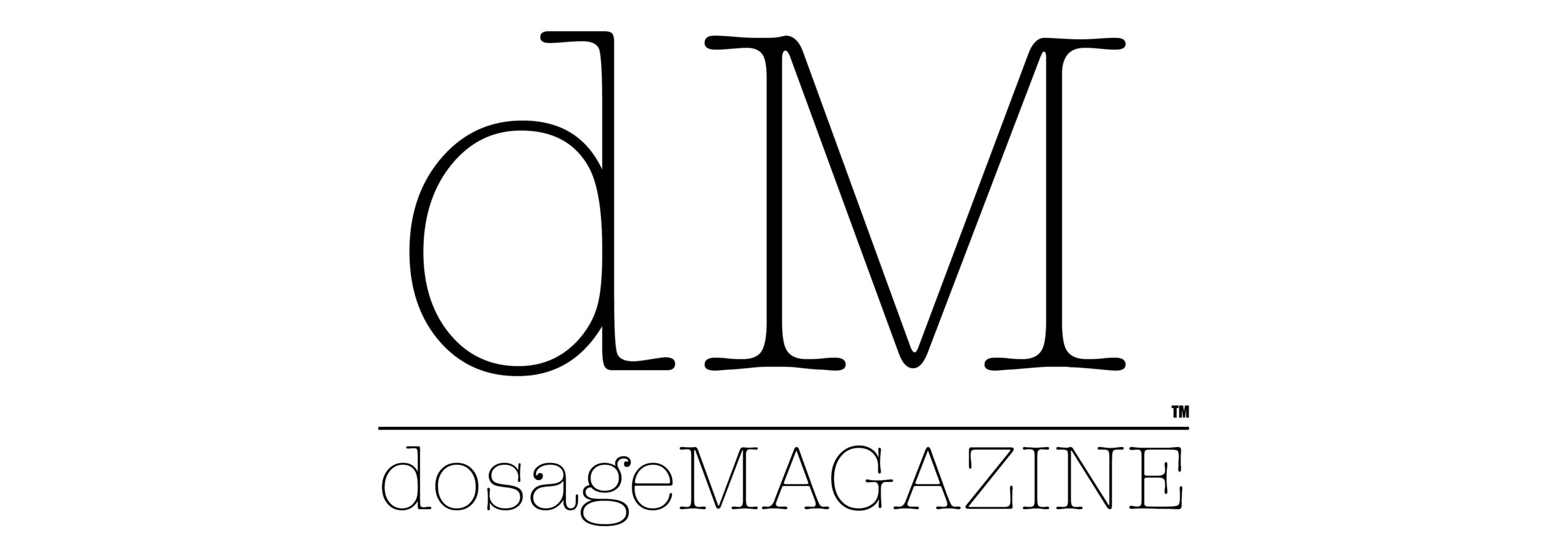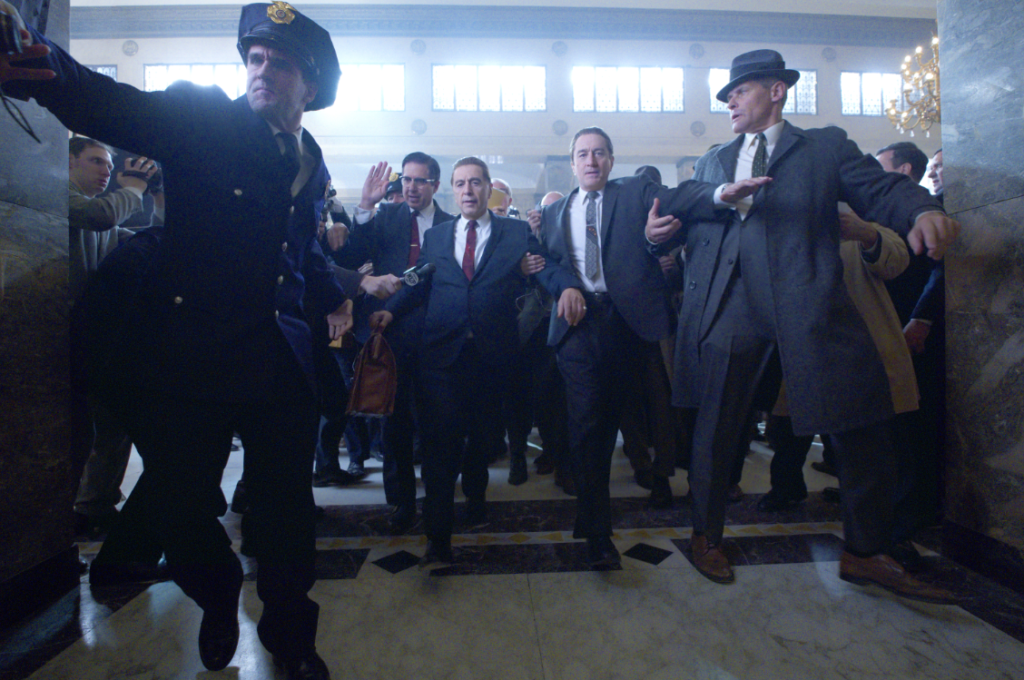
From the first scene where Frank Sheeran is introduced to its end, The Irishman is Martin Scorsese’s love song to the Philadelphia mob.
For weeks after September’s New York Film Festival, I tried convincing people that The Irishman – Martin Scorsese’s long, greyly elegiac masterpiece on aging, memory, male toxicity and the Mob, in that order – was a Philadelphia film.
It’s not been an easy road. Most critics and pseudo-critics want to talk about why the streaming giant Netflix, The Irishman’s producer, and cinema chains couldn’t get together for a longer screening run (beyond this opening weekend) before Scorsese’s moody movie winds up on laptops and living room screens (November 27). They’ll talk about the costly de-aging FX that bring (mostly) Robert DeNiro and Joe Pesci from World War II into the 21st Century.

Of course, they talk of the film’s highlighting Scorsese’s hometown slayings (“Crazy Joe” Gallo’s assassination at Umberto’s Clam House in Manhattan; Gallo here played, in brief, by comic Sebastian Maniscalco), the deep dive into Chicago’s Union movement where we’re introduced to the loud, soft, tough and tender take on Jimmy Hoffa by Al Pacino, and the sunny palatial shores of Miami where Pacino locks into battle mode (and a humorous take on the mannered courtesy of kings that is promptness and never wearing shorts to a meeting) with upstart Teamster rival, Anthony Provenzano (played to snot-nosed perfection by Stephen Graham).
But make no mistake: from the first scene where Irishman Frank Sheeran, a Camden-native who lived and passed away in Philly in 2003, is introduced, alone and lonely in a nursing home with a screenshot that is fluid and revelatory as Scorsese’s famed Copacabana scene in Goodfellas, to its end, The Irishman is the director’s love song to the Philadelphia mob, and all of its brooding machismo.

When DeNiro’s heavily-lidded Sheeran isn’t talking about coming up, proudly, through Philly’s Teamsters Local 107, there are drinks to be had (and pilfered meat delivered to) at John “Skinny Razor” DiTullio’s (Bobby Cannavale) Friendly Lounge at 8th and Washington. There are the many dinners and late-night meetings between Pesci’s Russell Bufalino (an influential figure in all Cosa Nostra doings and the boss of his own Northeastern Pennsylvania crime family) and Harvey Keitel’s mustachioed Angelo Bruno at Villa Di Roma.
There are more than a few rides along Pennsylvania interstates, a few stops at Philly loading docks, and a few vague street scenes throughout South and North Philadelphia with DeNiro’s Sheeran taking care of business for the Mob, as well as his family (including the daughter that ultimately shuns her father played silently by Anna Pacquin). There’s even a top Teamsters tribute to union boss Sheeran at the old Latin Casino in Cherry Hill with Frank Rizzo, Cecil B. Moore, and other Philly police and political heads on the dais, and Little Steven Van Zant doing his best Jerry Vale impersonation. So what that none of The Irishman was shot in the actual locations Scorsese portrays: there is Philly blood and bone in this film.
For a film that famously runs 3 hours and 30 minutes, and runs the literal and emotional urban terrain of its moment, a good half of The Irishman happens in Philadelphia. Take that in while luxuriating in what is Martin Scorsese’s most poignant, ruminative, and even elegant film.
About Post Author
Discover more from dosage MAGAZINE
Subscribe to get the latest posts sent to your email.



I was really surprised that Joe Pisci was nominated for a Golden Globe but Robert De Niro wasnt!. I mean he was good in The Irishman but De Niro I think was better. Don’t you agree??
Both Pesci and DeNiro gave quiet nuanced performances. Pesci’s may have been more delicate and tempered, yet DeNiro’s was more pained, and deeply deeply sad… though neither particularly tortured nor empathetic. in Both deserved the noms.